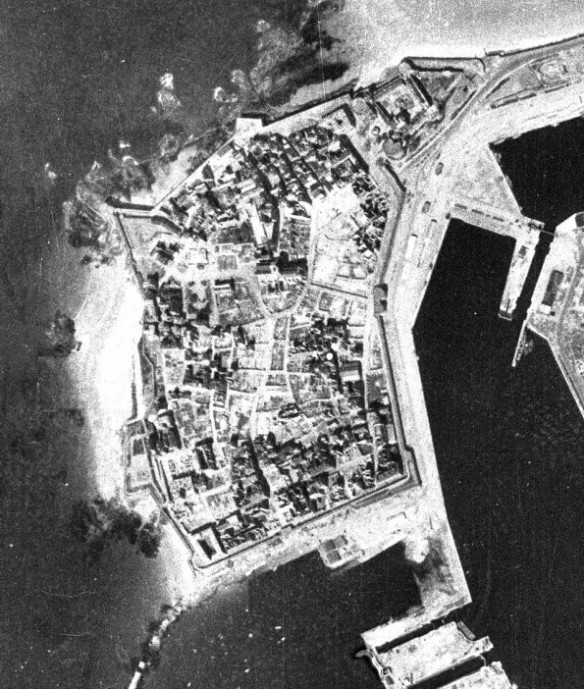The 4th Armoured Division thrust across the peninsula as far as its southern coast at Vannes. The strategic objective was the fortress of Brest, nearly 200 miles from Avranches. Patton sent in the 6th Armoured Division. However, it allowed itself to be delayed at Dinan, south of Saint-Malo, by Bacherer’s combat units which were threatening the American flank. Patton had the divisional commander summoned to the telephone: “Keep going. Keep going regardless of your flanks until you’ve reached Brest!” he fumed. Another instance of how boldness or caution can decide the outcome of a battle. A precious twenty-four hours had been lost. The German garrisons of Brest and Saint-Malo had time to prepare to defend themselves. Brest could no longer be taken by a coup.
Saint Malo Defence: a heterogeneous mixture of alarm and combat troops, numbering twelve thousand and including remnants of the 77th Infantry Division, held inner and outer rings of prepared defenses. The inner perimeter was a rough semicircle about ten miles long which faced southeast and was located about two and one half miles from the center of the port. It bounded a zone of strongpoints which extended throughout the St. Malo area. The inner defense area included the city of St. Malo and the suburbs of Parame, St. Sevard and, west of the Rance River, Dinard.
The outer perimeter was a series of strongpoints concentrically positioned six miles beyond the inner ring. The Americans attacked in division strength on 5 August and, after overcoming moderate resistance, pierced it, passing through two gaps southeast of St. Malo, the attackers reached the inner defense perimeter by noon of the following day. From 6 August until 14 August three infantry regiments moved slowly through the defense belt, encountering heavy fire from specially constructed fortifications and well developed strongpoints in prominent buildings. While most of the city and surrounding villages had been cleared by 15 August, a center of resistance remained in German hands. This was a citadel of ancient construction on a promontory opposite the city of St. Malo. Thoroughly modernized and equipped to withstand both bombardment and siege, it held out until 17 August.
#
In the courtyard of the fortress of Saint-Malo, on Hill 26, Colonel Bacherer was addressing his men. There were 700 of them left. There was no longer enough water or food for all. That was what Bacherer told them.
“Family men, two paces forward!” he commanded. And he let those who had wives and children at home fall out and march into captivity. For those who remained began the final chapter of the fortress.
The Americans battered the strongpoints and penetrated into the outer defences.
Early in the morning of August 15 the telephone rang in Bacherer’s underground headquarters. Surprised, the colonel picked up the receiver. “This is Major-General Maçon,” a voice said. Bacherer was speechless. “I am inviting you to surrender. We are already inside your strongpoints,” the American commander continued through an interpreter.
Bacherer replied, “I see no cause for surrender, but I would request you to take over my wounded who are no longer capable of fighting.”
Macon agreed. An hour’s cease-fire was arranged. The bulkhead doors of the fortifications swung open. American ambulances drove up and took over the German wounded. For one hour humanity prevailed over the war.
Then the doors of the galleries on top of Paulus Hill were closed once more. The final round began. Towards 1400 hours the Americans began to use phosphorus shells. The ammunition dump was hit and an explosion followed. Fire broke out. Burning liquid phosphorus set fire to the straw in the troops’ dormitories, and since there was no ventilation plant the galleries were soon filled with smoke and fumes. At that stage Bacherer ordered a white flag to be hoisted, and 350 survivors marched off into captivity. Paulus Hill had fallen.
